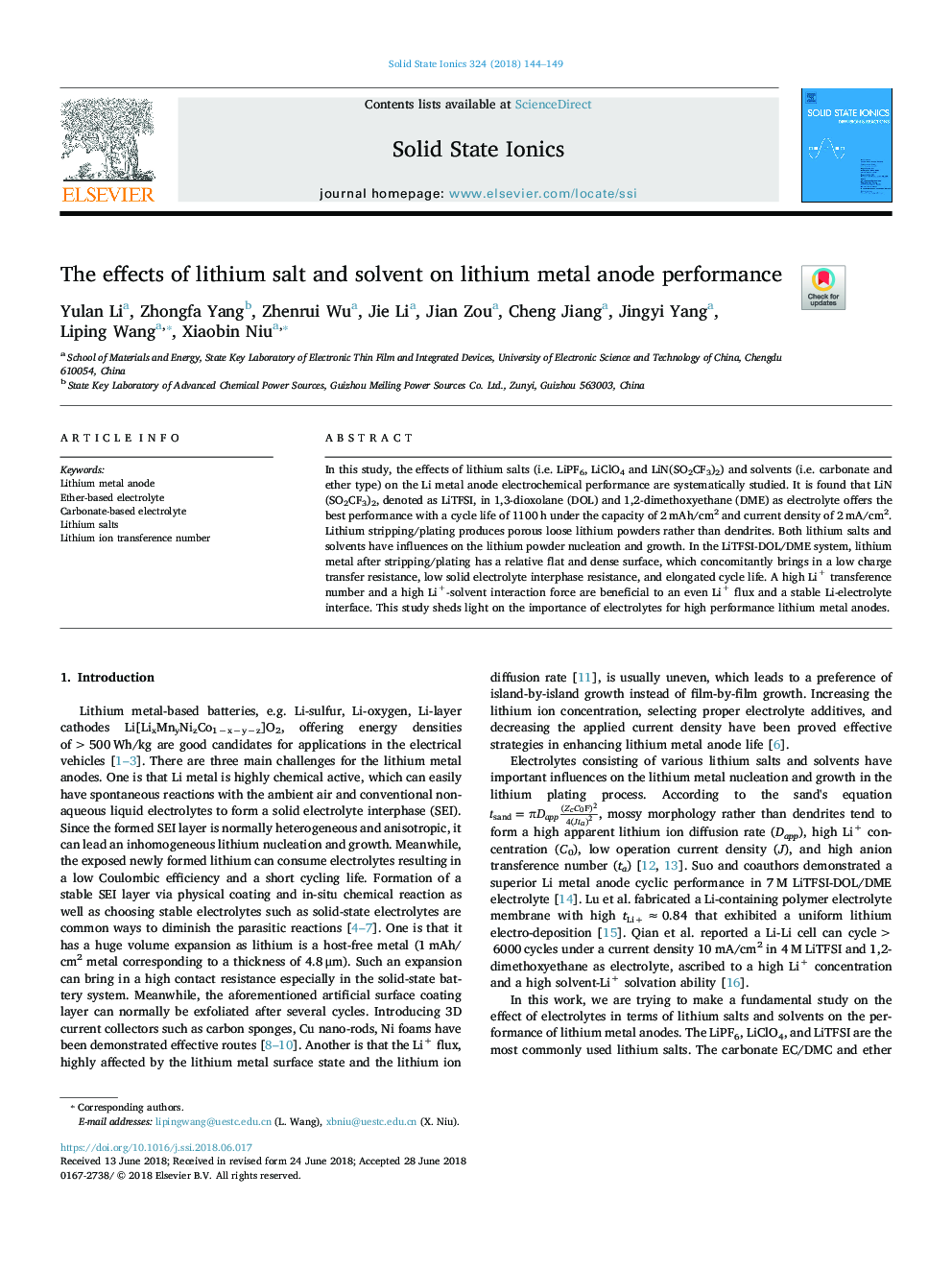| کد مقاله | کد نشریه | سال انتشار | مقاله انگلیسی | نسخه تمام متن |
|---|---|---|---|---|
| 7744192 | 1498219 | 2018 | 6 صفحه PDF | دانلود رایگان |
عنوان انگلیسی مقاله ISI
The effects of lithium salt and solvent on lithium metal anode performance
ترجمه فارسی عنوان
اثرات نمک لیتیوم و حلال بر عملکرد آنودای فلز لیتیوم
دانلود مقاله + سفارش ترجمه
دانلود مقاله ISI انگلیسی
رایگان برای ایرانیان
کلمات کلیدی
آند نیکل لیتیوم، الکترولیت بر اساس اتر، الکترولیت بر اساس کربنات، نمک لیتیم، شماره انتقال یون لیتیوم،
موضوعات مرتبط
مهندسی و علوم پایه
شیمی
الکتروشیمی
چکیده انگلیسی
In this study, the effects of lithium salts (i.e. LiPF6, LiClO4 and LiN(SO2CF3)2) and solvents (i.e. carbonate and ether type) on the Li metal anode electrochemical performance are systematically studied. It is found that LiN(SO2CF3)2, denoted as LiTFSI, in 1,3-dioxolane (DOL) and 1,2-dimethoxyethane (DME) as electrolyte offers the best performance with a cycle life of 1100â¯h under the capacity of 2â¯mAh/cm2 and current density of 2â¯mA/cm2. Lithium stripping/plating produces porous loose lithium powders rather than dendrites. Both lithium salts and solvents have influences on the lithium powder nucleation and growth. In the LiTFSI-DOL/DME system, lithium metal after stripping/plating has a relative flat and dense surface, which concomitantly brings in a low charge transfer resistance, low solid electrolyte interphase resistance, and elongated cycle life. A high Li+ transference number and a high Li+-solvent interaction force are beneficial to an even Li+ flux and a stable Li-electrolyte interface. This study sheds light on the importance of electrolytes for high performance lithium metal anodes.
ناشر
Database: Elsevier - ScienceDirect (ساینس دایرکت)
Journal: Solid State Ionics - Volume 324, 15 October 2018, Pages 144-149
Journal: Solid State Ionics - Volume 324, 15 October 2018, Pages 144-149
نویسندگان
Yulan Li, Zhongfa Yang, Zhenrui Wu, Jie Li, Jian Zou, Cheng Jiang, Jingyi Yang, Liping Wang, Xiaobin Niu,
